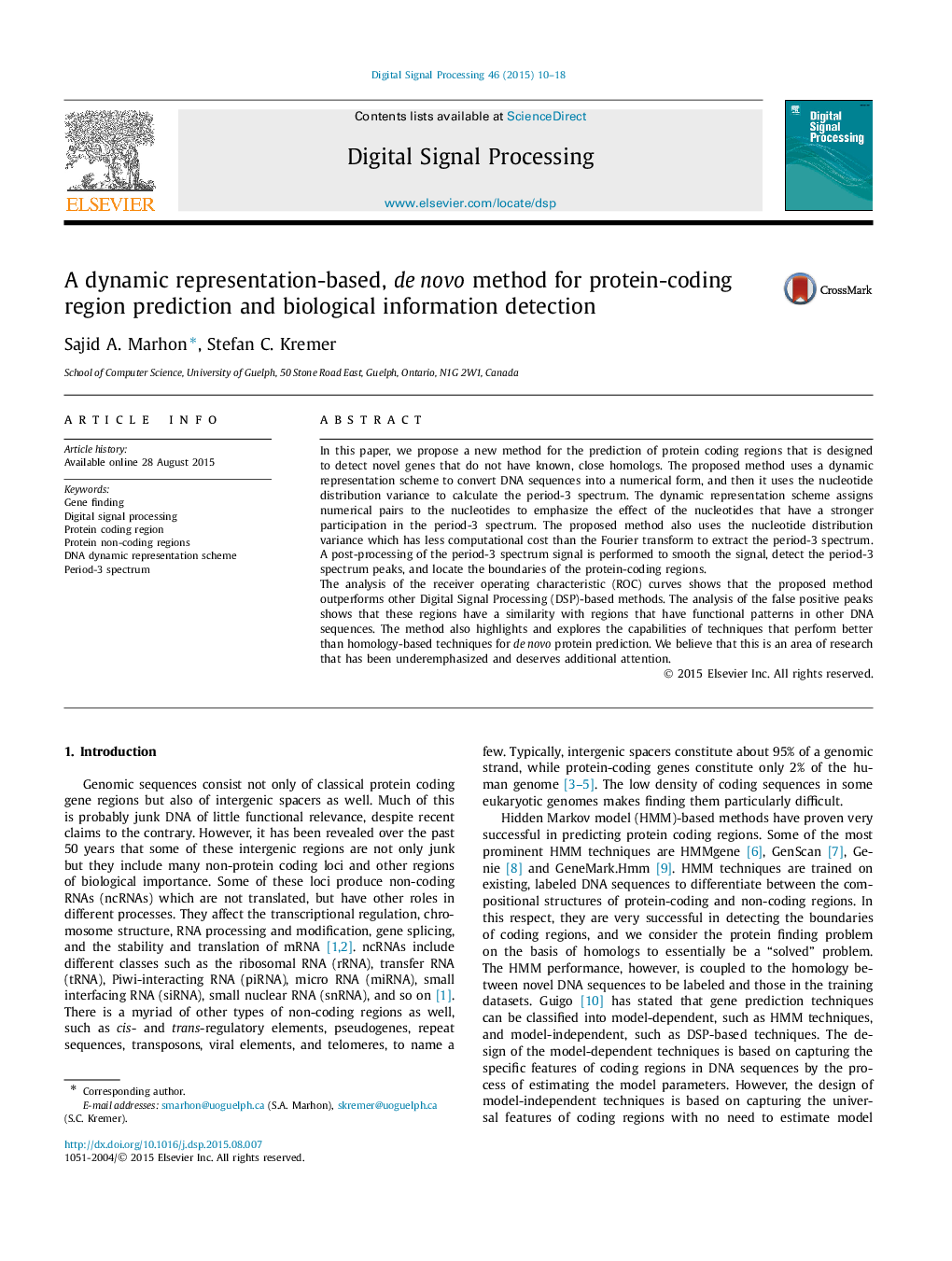| Article ID | Journal | Published Year | Pages | File Type |
|---|---|---|---|---|
| 559301 | Digital Signal Processing | 2015 | 9 Pages |
In this paper, we propose a new method for the prediction of protein coding regions that is designed to detect novel genes that do not have known, close homologs. The proposed method uses a dynamic representation scheme to convert DNA sequences into a numerical form, and then it uses the nucleotide distribution variance to calculate the period-3 spectrum. The dynamic representation scheme assigns numerical pairs to the nucleotides to emphasize the effect of the nucleotides that have a stronger participation in the period-3 spectrum. The proposed method also uses the nucleotide distribution variance which has less computational cost than the Fourier transform to extract the period-3 spectrum. A post-processing of the period-3 spectrum signal is performed to smooth the signal, detect the period-3 spectrum peaks, and locate the boundaries of the protein-coding regions.The analysis of the receiver operating characteristic (ROC) curves shows that the proposed method outperforms other Digital Signal Processing (DSP)-based methods. The analysis of the false positive peaks shows that these regions have a similarity with regions that have functional patterns in other DNA sequences. The method also highlights and explores the capabilities of techniques that perform better than homology-based techniques for de novo protein prediction. We believe that this is an area of research that has been underemphasized and deserves additional attention.
